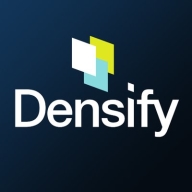

Apptio One and Densify are competing products in the realm of IT cost management and optimization. Apptio One leads with its cost-tracking capabilities, while Densify stands out with its predictive analytics for resource optimization.
Features: Apptio One offers extensive financial analysis tools, comprehensive IT cost tracking, and meticulous budget management. Densify has predictive analytics capabilities, cloud resource optimization, and focuses on resource efficiency with a forward-thinking approach.
Ease of Deployment and Customer Service: Apptio One provides a modular deployment model with robust support, customization options, and integrates with existing systems; however, some customers experience a complex initial setup. Densify offers a streamlined deployment process emphasizing ease of use, simplifying integration into diverse environments. It is also noted for its prompt and reliable customer service that ensures a supportive implementation experience.
Pricing and ROI: Apptio One's setup cost is higher due to its extensive features and capabilities, yet it provides favorable long-term ROI through its cost management tools. Densify is known for a more cost-effective setup, achieving ROI by optimizing infrastructure usage and reducing operational expenses, making it attractive for businesses aiming to enhance resource allocation with cost efficiency in mind.


ApptioOne unifies financial and operational data into a unified model built on the industry-standard taxonomy of cost categorization. Utilizing sophisticated allocation rules along with focused metrics and KPIs, we enable organizations to answer the most strategic questions about investments and accelerate budgeting and forecasting processes. By explaining investments and variance to plan more quickly to constituencies and executive management, organizations can uncover opportunities to optimize cost structures, reduce risk, and accelerate growth.
Densify is a hybrid cloud and container resource management platform that makes workloads self-aware of their precise resource requirements and automates the resource management and selection process. This solution helps you control your cloud spend and also helps your apps perform and scale better. Densify enables you to match your cloud requirements with the optimal cloud supply. Additionally, Densify is the only technology that leverages patented, predictive machine learning-powered analytics to perform advanced modeling of workload patterns, and provide precise optimization directives. It is ideal for cloud engineers, container platform owners, and IT finance.
Densify works by:
Densify Features
Densify has many valuable key features. Some of the most useful ones include:
Densify Benefits
There are many benefits to implementing Densify. Some of the biggest advantages the solution offers include:
We monitor all Cloud Cost Management reviews to prevent fraudulent reviews and keep review quality high. We do not post reviews by company employees or direct competitors. We validate each review for authenticity via cross-reference with LinkedIn, and personal follow-up with the reviewer when necessary.